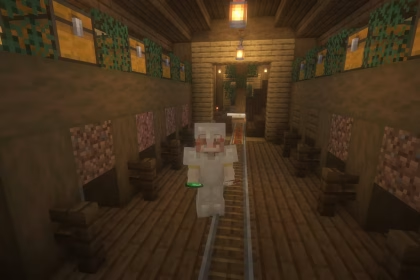Assigning operator (OP) powers in Minecraft grants players special privileges to manage and control the server. This guide will walk you through the process of assigning OP rights to yourself or other players, explaining the different levels of OP rights and how to manage them effectively.
Prerequisites
Before you begin, ensure that your Minecraft server is ON. Commands can only be run while the server is active.
Steps to Assign OP Rights
1. Access the Server Console
To assign OP rights, you need access to the server’s console:
- Open your server panel provided by your hosting service.
- Navigate to the server you want to manage and find the “Console” option.
You should now see a dark window displaying the server’s console output. There is an input field at the bottom where you can enter commands.
2. Assign OP Rights via Console
In the console’s input field, type the following command to assign OP rights to a player (replace {Player-Name} with the player’s Minecraft username): op {Player-Name}
Note: Do not include the forward slash / when typing this command in the console.
After a few seconds, you should see a message in the console stating: “Made player a server operator”. This confirms that the player now has OP rights and can perform various administrative tasks, such as changing game modes.
3. Adjusting OP Rights in-Game
Once a player has OP rights, you can adjust their permissions in-game. Minecraft divides OP rights into four levels, each granting different permissions.
OP Rights Levels
The OP rights are divided into four levels, with level 4 being the default. Each level grants different sets of permissions:
- Moderator: Can make changes within the protected spawn area.
- Gamemaster: Can set and edit command blocks and execute various cheat commands (e.g.,
/gamemode). - Admin: Can kick and ban players and perform general server administration tasks. Can also appoint other operators.
- Owner: Has no restrictions and can perform any command.
4. Setting OP Levels Using ops.json
To assign specific OP levels, you need to edit the ops.json file in your server’s directory:
Access File Manager:
- Navigate to the file manager in your server panel.
- Locate the
ops.jsonfile in the server’s directory.
Edit ops.json:
- Open
ops.jsonwith a text editor. - You will see entries for each operator with a “level” field. Set the “level” field to the desired level (1-4) for each player.
- Open
[
{
"uuid": "player-uuid",
"name": "PlayerName",
"level": 4,
"bypassesPlayerLimit": false
}
]
- Save Changes and Restart Server:
- Save the edited
ops.jsonfile. - Restart the server from the console tab in your server’s interface to apply the changes.
- Save the edited
5. Using Permissions Plugins
For more detailed and specific permissions management, consider installing a permissions plugin like LuckPerms on your Bukkit/Spigot server. These plugins allow you to create multiple groups and assign specific permissions to each group, simplifying the management of player rights.












